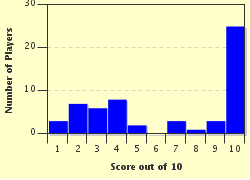Quiz Answer Key and Fun Facts
1. The title "Enuma Elish" translates to "When up High" in English, but from where does this title get its name?
2. Where were the first pieces of the Enuma Elish found?
3. Many scholars believe the Enuma Elish was originally composed, at least in a basic form, by this culture because many of the names are non-Semitic and non-Indo-European including most of the gods and even the name used for humans. What culture is it?
4. This poem was recited every year during the holiday which marked what?
5. The story begins with Apsu plotting to kill his descendants because they disturbed his tranquility. He, however, gets murdered by his great-great-grandson, Ea. Why does Ea kill Apsu?
6. What became of Apsu after he was killed?
7. After the murder of her consort, Tiamat became angry and created an army of herself, her vizier Kingu, eleven monsters, and several other gods to fight against the Anunaki, the family of Ea. For the Anunaki, Marduk was chosen to fight against Tiamat directly. Why was he chosen?
8. What did Marduk ask in return for fighting and defeating Tiamat?
9. Which of the following gods was NOT given a domain to rule by Marduk after his creation of the new world?
10. What was the Esagila?
Source: Author
theskink
This quiz was reviewed by FunTrivia editor
looney_tunes before going online.
Any errors found in FunTrivia content are routinely corrected through our feedback system.

